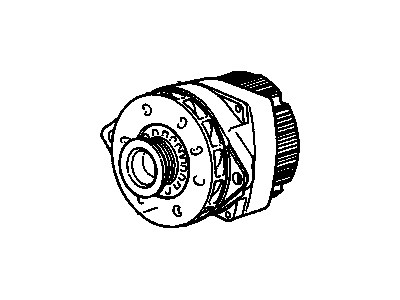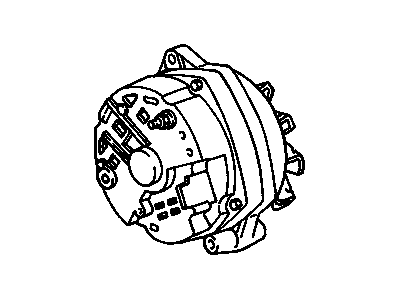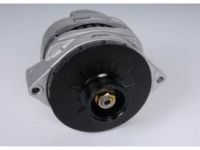
My Garage
My Account
Cart
Genuine Cadillac Fleetwood Alternator
Generator- Select Vehicle by Model
- Select Vehicle by VIN
Select Vehicle by Model
orMake
Model
Year
Select Vehicle by VIN
For the most accurate results, select vehicle by your VIN (Vehicle Identification Number).
8 Alternators found
Cadillac Fleetwood Alternator
Each OEM Cadillac Fleetwood Alternator we offer is competitively priced and comes with the assurance of the manufacturer's warranty for the part. Furthermore, we guarantee the speedy delivery of your orders right to your doorstep. Our hassle-free return policy is also in place for your peace of mind.
Cadillac Fleetwood Alternator Parts Questions & Experts Answers
- Q: How to conduct a voltage test and replace the alternator on Cadillac Fleetwood?A:When doing this, the engine should be off then the headlights turned on for 15-20 secs to counteract any surface charge on the battery, then using DVOM set to volts DC measure the voltage across the terminals of the battery then note down the reading taken. For a no-load test of the battery junction box, connect a tachometer to the engine, engage PARK position on the transmission and set the emergency brake off all electrical loads and start the engine and increase the speed up to 1500 RPM as the battery voltage should increase at least 0.5 volts but it should not rise more than 2.5 volts. If the voltage does not rise more than 0.5 volts, it means that the alternator is not charging and if the voltage goes beyond 2.5 volts, it means it is overcharging; this is usually caused by a faulty alternator or other related parts for the exact failure to be determined, further tests are required. For a load test, with the engine running, turn on the blower motor and high beams, maintain engine speed at approximately 2000 rpm for different loading tests, measure the voltage at battery terminal which should rise at least by 0.5v from previous test; failure to read as earlier indicated is an indication of a defective charging system. For replacement of the generator on a 4.6L engine (except Seville) remove the negative battery cable, several related parts and unfasten the generator and then bolt in the new generator, by reversing the instructions here and fastening the bolts to the appropriate levels of torque. Extra measures in regard to the Seville with the 4.6L engine are outlined as follows: Pulling the coolant, then the radiator and condenser, then the generator, and, after that, the measures will entail reinstalling the parts but making sure that all the check and connections bear the correct specs as to torque. For 4.5L and 4.9L engines turn off the car, remove the generator, turn the crankshaft pulley so that the generator fan is aligned with number one cylinder, put in the new generator and secure it also reconnect all the cables and tighten bolts, nuts and screws as recommended.






















